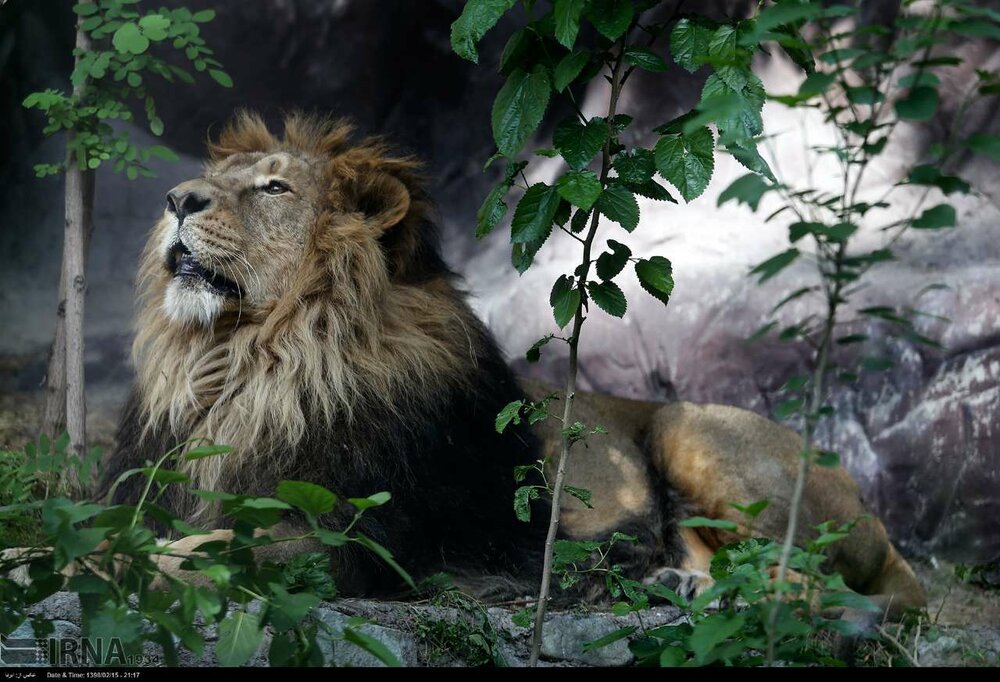
TEHRAN —
Iran’s Department of Environment (DOE) has no specific plans for
reintroduction of Asiatic lion into the wild for the time being, Majid
Kharrazian-Moqaddam, director of the wildlife conservation and
management at the DOE, has said.
Species reintroduction is the
deliberate release of a species into the wild, from captivity or other
areas where the organism is capable of survival. The goal of species
reintroduction is to establish a healthy, genetically diverse,
self-sustaining population to an area where it has been extirpated, or
to augment an existing population.
Species that may be eligible for
reintroduction are typically threatened or endangered in the wild.
Because reintroduction may involve returning native species to
localities where they had been extirpated, some prefer the term
"reestablishment".
Disappeared for 80 years, Persian lion
once prowled from the Middle East to India, while currently only a
fraction of these magnificent animals survive in the wild, which range
is restricted to the Gir National Park and environs in the Indian state
of Gujarat.
A male Persian lion, born 6 years ago, was
sent to Tehran Zoological Garden from Britain’s Bristol Zoo on May 1,
under a population management program aiming at endangered species
reproduction by the European Association of Zoos and Aquaria (EAZA).
Iran will soon host a female lion of the
same subspecies from Ireland to accompany the recently returned male
lion through the conservation program.
And now speculation are running rampant,
as some are starting to predict that the animal will be reintroduced
into the Iran’s wild once again after long decades of extinction
On the International Union for
Conservation of Nature Red List, Asiatic lion is listed under its former
scientific name Panthera leo persica as Endangered because of its small
population size and area of occupancy.
Conflicts with humans, wildfires,
poaching, habitat loss, canine distemper virus, decreases in population
sizes of native ungulates were among the threats pushed the lions toward
extinction in Iran, while lack of protection measures and plans is not
deniable either.
“DOE welcomes Asiatic lion’s return to the
country after decades of disappearance, however, we have only permitted
the return of the animal to the zoo and will monitor its condition and
have no plans for its reintroduction for the moment,” IRNA news agency
quoted Kharrazian-Moqaddam as saying on Wednesday.
Currently the only purpose of the return of the animal is keeping it at the zoo, he highlighted.
DOE’s priority is to protect the species
which are already existing in the country [and not reintroduction of the
extinct ones], he stated.
The DOE official went on to say that in
order to reintroduce a species into the wild it is essential to restore
its former habitats meaning minimizing human conflicts, increasing prey
population, and in general omitting current threats to the animals.
Maybe in the future we decide to plan a
reintroduction scheme for Asiatic lion in the country, however, making
the necessary arrangement may take years, he concluded.
Historical records in Iran indicate that
the Asiatic lion ranged from the Khuzestan Plain to the Fars in steppe
vegetation and pistachio-almond woodlands. It was widespread in the
country, but in the 1870s, it was sighted only on the western slopes of
the Zagros Mountains, and in the forest regions south of Shiraz.
Some of the country's last lions were
sighted in 1941 between Shiraz and Jahrom in Fars province, and in 1942,
a lion was spotted about 65 km northwest of Dezful. In 1944, the corpse
of a lioness was found on the banks of Karun River in Khuzestan
province.
https://www.tehrantimes.com/news/435694/No-plans-for-reintroduction-of-Asiatic-lion-DOE-official
https://www.tehrantimes.com/news/435694/No-plans-for-reintroduction-of-Asiatic-lion-DOE-official
No comments:
Post a Comment